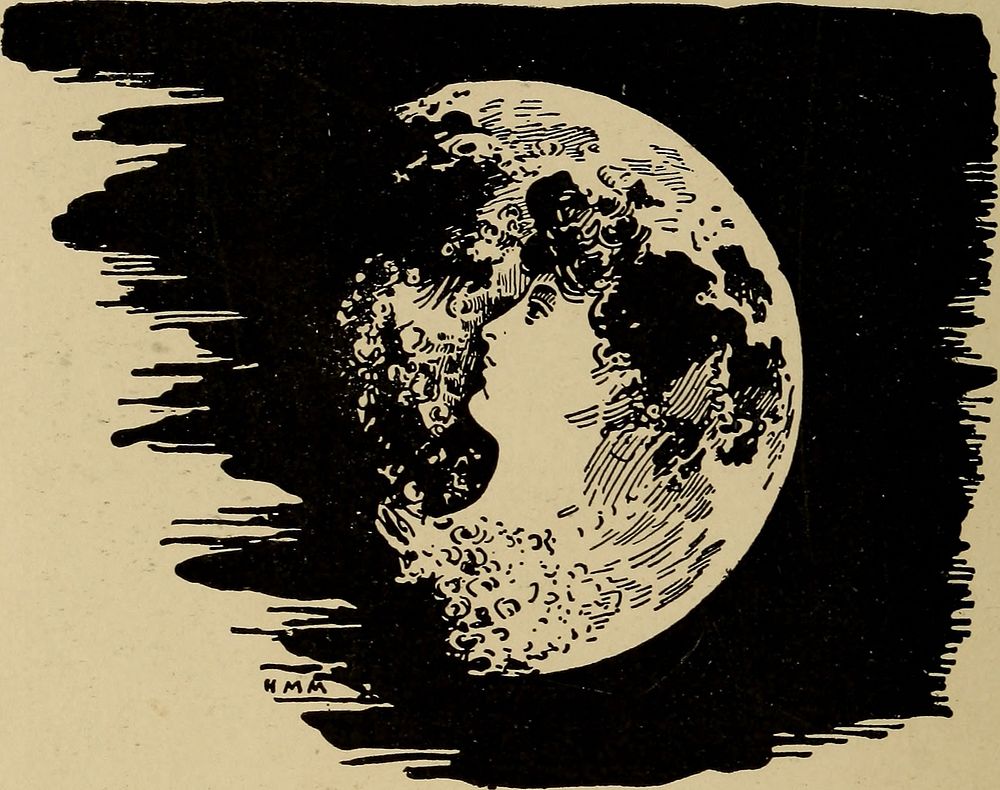https://creativecommons.org/publicdomain/zero/1.0/https://www.rawpixel.com/image/9975704

Identifier: astronomyforamat00flam (find matches)Title: Astronomy for amateursYear: 1904 (1900s)Authors: Flammarion, Camille, 1842-1925 Welby, Frances A. (Frances Alice) trSubjects: AstronomyPublisher: New York, D. Appleton and companyContributing Library: The Library of CongressDigitizing Sponsor: The Library of CongressView Book Page: Book ViewerAbout This Book: Catalog EntryView All Images: All Images From BookClick here to view book online to see this illustration in context in a browseable online version of this book.Text Appearing Before Image:Fig. 66.—The Mans head in the Moono not fail to see the masculine profile just described, andeven to imagine the **kiss in the Moon. These vague aspects disappear as soon as the Moonis examined with even the least powerful instruments: ASTRONOMY FOR AMATEURS the spots are better defined, and the illusions of indistinctvision vanish. Compare this direct photograph of theMoon, taken by the author some years ago (Fig. 69):here is neither a human figure, man, dog, hare, norfaggot; simply deep geographical configurations, and inthe low^er region, a luminous point v^hence certain lightText Appearing After Image:Fig. 67.—Womans head in the Moon. bands spread out, some being prolonged to a consider-able distance. And yet, from a little v^ay off, does itnot form the mans face above indicated ^ From the earliest astronomical observations madewith the aid of instruments by GaHleo, in 1609, peopletried to find out what the dark spots could represent, 238 THE MOON and they were called seas, because water absorbs light,and reflects it less than terra firma. The Moon of itselfNote About ImagesPlease note that these images are extracted from scanned page images that may have been digitally enhanced for readability - coloration and appearance of these illustrations may not perfectly resemble the original work.
Identifier: astronomyforamat00flam (find matches)Title: Astronomy for amateursYear: 1904 (1900s)Authors: Flammarion, Camille, 1842-1925 Welby, Frances A. (Frances Alice) trSubjects: AstronomyPublisher: New York, D. Appleton and companyContributing Library: The Library of CongressDigitizing Sponsor: The Library of CongressView Book Page: Book ViewerAbout This Book: Catalog EntryView All Images: All Images From BookClick here to view book online to see this illustration in context in a browseable online version of this book.Text Appearing Before Image:Fig. 66.—The Mans head in the Moono not fail to see the masculine profile just described, andeven to imagine the **kiss in the Moon. These vague aspects disappear as soon as the Moonis examined with even the least powerful instruments: ASTRONOMY FOR AMATEURS the spots are better defined, and the illusions of indistinctvision vanish. Compare this direct photograph of theMoon, taken by the author some years ago (Fig. 69):here is neither a human figure, man, dog, hare, norfaggot; simply deep geographical configurations, and inthe low^er region, a luminous point v^hence certain lightText Appearing After Image:Fig. 67.—Womans head in the Moon. bands spread out, some being prolonged to a consider-able distance. And yet, from a little v^ay off, does itnot form the mans face above indicated ^ From the earliest astronomical observations madewith the aid of instruments by GaHleo, in 1609, peopletried to find out what the dark spots could represent, 238 THE MOON and they were called seas, because water absorbs light,and reflects it less than terra firma. The Moon of itselfNote About ImagesPlease note that these images are extracted from scanned page images that may have been digitally enhanced for readability - coloration and appearance of these illustrations may not perfectly resemble the original work.
Original public domain image from Wikimedia Commons
Public DomainFree CC0 image for Personal and Business use